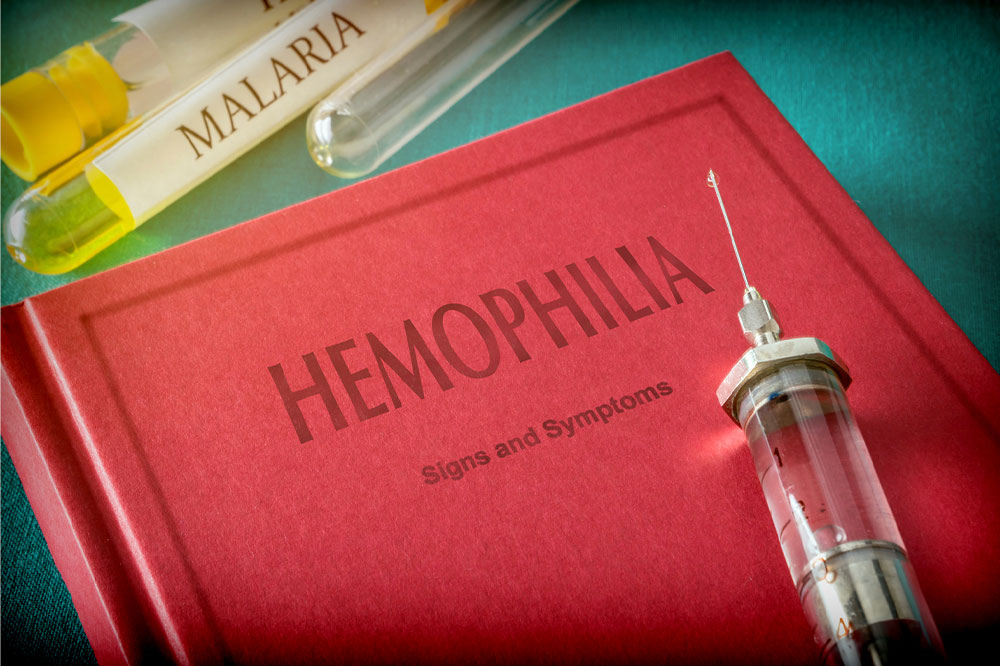Hemophilia – Diagnosis, Symptoms, and Management

Hemophilia is a rare disorder where the blood in a person’s body does not clot effectively. It occurs due to the lack of clotting factors in the blood. Those who have hemophilia tend to bleed for a lot longer compared to someone who does not. In severe cases of hemophilia, internal bleeding can be life-threatening. It is mainly a genetic disorder, and treatments are available that focus on improving clotting and reducing symptoms.
Symptoms
The symptoms of hemophilia can vary from person to person. It is normal because the symptoms depend on the level of clotting factors present in the blood. If the level of clotting factors has reduced only mildly, the individual may only bleed after surgery or trauma. But, if there is a massive deficiency in the blood clotting factors, the individual can bleed easily and sometimes for no reason. Some of the common signs and symptoms of spontaneous bleeding include:
- Sudden and unexplained bleeding
- Bleeding from cuts and other injuries without it stopping
- Unexplained bruises that tend to last for a long time
- Bleeding after taking a vaccination
- Nosebleeds with no cause
- Passing blood in stool and urine
- Pain and swelling in the joints
- Unexplained irritability in small children and infants
With hemophilia, minor injuries can also lead to profuse bleeding, which is why those with hemophilia should also be very careful about getting injured. A small bump on the head can also lead to bleeding into the brain. It is possible, especially with cases of severe hemophilia, one of the most severe complications of this condition. Some of the common signs of bleeding into the brain caused by hemophilia include-
- Painful headaches which last for an extended period
- Sleepiness and lack of energy to do things
- Constant vomiting and nausea
- Troubles with vision, especially double vision
- Seizures or convulsions
Getting proper and timely healthcare is crucial in the fight against hemophilia. If you notice any of the above symptoms, it is crucial to get checked by a healthcare professional. They will help diagnose the condition and provide the proper treatment.
Causes and risk factors
When a person is injured, any bleeding stops after a certain period. The body starts to pool the blood cells together to create a clot. This clot forms a wall which helps to stop the bleeding. What makes these blood cells come together are proteins known as clotting factors. If these clotting factors are not present in the blood or are available in minimal quantities, the body will have a hard time creating a clot which can lead to excessive bleeding. There are different types of hemophilia based on what triggers this condition. The two types include congenital hemophilia and acquired hemophilia. Congenital hemophilia is when the condition is passed down through genetics, meaning a person is born with this condition. Congenital hemophilia is categorized based on the clotting factors that are missing. The most common kind here is hemophilia A, where the individual has level levels of clotting factor 8. The other common type, hemophilia B, happens when the individual has a low clotting factor 9. On the other hand, acquired hemophilia is when the individual develops this condition without having any family history of the disease. This type of hemophilia can be caused due to pregnancy, autoimmune conditions, cancer, and multiple sclerosis.
The most significant risk factor for individuals is genetics and familial predisposition. Those who have family members who have this condition are at high risk of developing it themselves. Studies have also found that gender can play a massive role in developing this condition. Males are more likely to develop hemophilia compared to females.
Diagnosis
In severe cases of congenital hemophilia, healthcare professionals can diagnose the condition within the first year of life. On the other hand, mild cases of hemophilia may go undiagnosed until much later. In some cases, it may also go undiagnosed until adulthood. It is mainly because mild cases do not typically exhibit many signs and symptoms. Individuals typically learn about their hemophilia diagnosis when they undergo a surgical procedure.
Tests that are present for hemophilia are mainly used to reveal the clotting factor deficiency. It helps to understand which clotting factor is present in low levels. It also helps to determine if the case is mild or severe.
Those with a family history of hemophilia can opt for a genetic test. This help to find if the individual carries particular genes responsible for hemophilia. It can help the individual make well-thought decisions about getting pregnant. It is also possible to determine if the fetus has been affected by hemophilia during pregnancy. But, the testing does pose certain risks, which is why the doctors and the individuals should discuss to understand the benefits and risks of this test and make a decision.
Treatments
Hemophilia is caused due to the deficiency of clotting factors in the blood. The way to treat this is to replace the clotting factors. For severe cases of hemophilia, replacement therapy is given to treat a bleeding episode. The clotting factors are added to the blood via a tube connected to a vein. It can also be carried out regularly at home as it can be a preventive measure for bleeding episodes. Some individuals can also opt for continuous replacement therapy. Clotting factors can be made from the blood donated by other individuals. In some cases, clotting factor is also produced in the laboratory. Such clotting factors are not made from human blood.
Other hemophilia treatments include desmopressin, clot-preserving treatments, fibrin sealants, physical therapy, and even basic first aid (for small injuries). In addition, many ongoing clinical trials are looking for more effective treatments to manage this condition.






